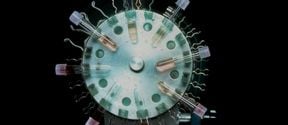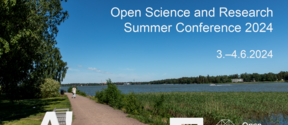Finland’s first satellite heads for space in Autumn 2015
Aalto University has obtained a launch for the Aalto-1 satellite, which has been built in a student project in close cooperation with other Finnish space experts.
The rocket carrying the Aalto-1 satellite will be launched into orbit with the largest amount of satellites ever launched at one time. The Aalto-1 satellite has a place on a rocket that will take into space about 80 nanosatellites. Nanosatellites are standardised small satellites that weigh about 1–10 kg.
The Aalto-1 satellite will be delivered to its designated rocket by the Dutch launch broker Innovative Solutions in Space and launched into space by the SpaceX company.
– The precise date will only be sorted out later. Our satellite will be ready by the summer after which we will forward it, by way of the launch broker, for integration with the rocket. During the summer those tests that are still necessary will be done at the future launch location, says the project’s Responsible Leader professor Jaan Praks.
The satellite’s engineering model is currently been tested at Otaniemi in Espoo. There are still many phases ahead before the anticipated moment in the spring.
– We have constructed a so-called engineering model of the satellite, and on this we performed a vibration test a few weeks ago. We tested critical points on how they withstood the forces and vibrations of a launch. The test went well. We found a few minor snags and these will be fixed for the final satellite, says Quality Manager Tuomas Tikka with satisfaction.
– Now we have ordered the components for the satellite flight model. In actual fact, assembly of the satellite’s subsystems can be done in a few days, but verification of the key operations of the systems and programming takes time.
One major test is still to come. During January thermal vacuum tests will be performed on the engineering model with the aim of testing how well the satellite withstands the large heat fluctuations of space.
– During the spring much work will also be done with the software, adds Systems Engineer Antti Kestilä.
Finnish space expertise fitted into a milk can
When the rocket is launched into orbit, contact will be made with the Aalto-1 satellite within a few hours; inside 24 hours at the most. The satellite will be tracked at Otaniemi in Espoo. Its lifetime is expected to be about two years, but in the best case even five years.
– The third goal of the Aalto-1 satellite is the monitoring and demonstration of the operation of the payload in space. This project has developed enormously Finnish education in space technology, Praks states.
A large amount of Finnish space expertise will lift off with the satellite. A spectrometer device developed at VTT Technical Research Centre of Finland will be used in environmental remote sensing. An electrostatic plasma brake developed by the Finnish Meteorological Institute will also be tested on the satellite. With the help of the plasma brake, the satellite can be brought to a lower orbit when it has accomplished its mission. Thus, the satellite will be destroyed as it falls into the atmosphere and not remain to circle the Earth as space junk. The Aalto-1 satellite’s small radiation meter was in turn constructed by students and researchers from the University of Helsinki and the University of Turku.
Aalto-1 is a student satellite project that is led by the Department of Radio Science and Engineering of the School of Electrical Engineering at Aalto University. The satellite has been planned and constructed mainly as work for student theses and within project frameworks. Together, over 80 students have been involved in the project that began in 2010.
- Published:
- Updated:
Read more news

5 ways to train your creativity this Spring and Summer
To celebrate the United Nations World Creativity Day on April 21, we made a list of five tips to boost your creativity this Spring/Summer
Robotics needs safe behavior patterns
Robotics and autonomous systems are developing rapidly. Algorithms that withstand disturbances and uncertainties in the system model and environment are critical for development.
A new way to do controlled experiments in medicine: simulate the control
Generative AI could augment randomized controlled trials.